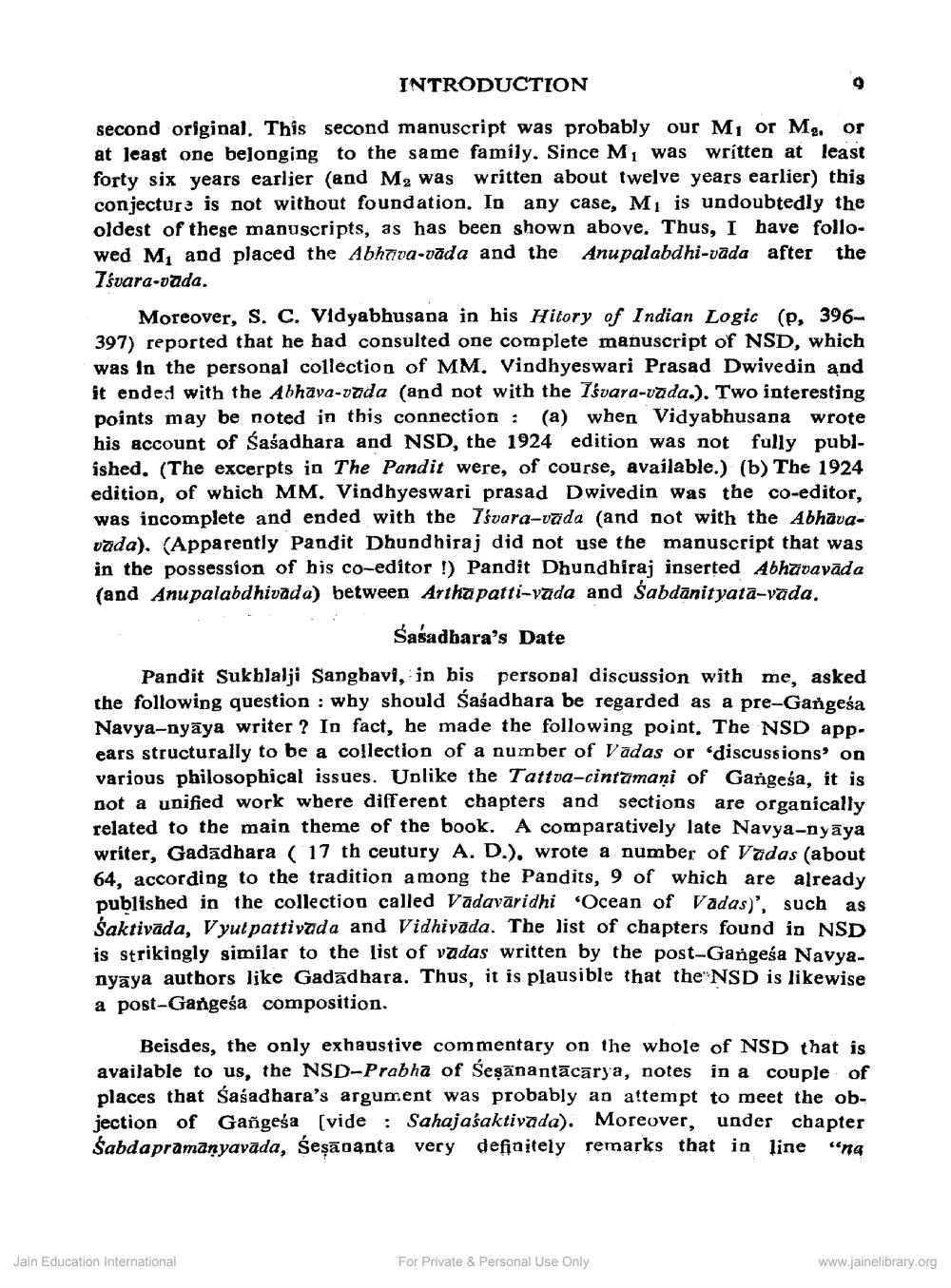________________
INTRODUCTION
second original. This second manuscript was probably our Mı or Mg. or at least one belonging to the same family. Since M, was written at least forty six years earlier (and M, was written about twelve years earlier) this conjecture is not without foundation. In any case, M, is undoubtedly the oldest of these manuscripts, as has been shown above. Thus, I have follo. wed M, and placed the Abhoiva-vāda and the Anupalabdhi-vada after the Isvara-vada.
Moreover, S. C. Vidyabhusana in his Hitory of Indian Logic (p. 396397) reported that he had consulted one complete manuscript of NSD, which was in the personal collection of MM. Vindhyeswari Prasad Dwivedin and it ended with the Abhāva-vada (and not with the Isvara-vada.). Two interesting points may be noted in this connection : (a) when Vidyabhusana wrote his account of Śaśadhara and NSD, the 1924 edition was not fully published. (The excerpts in The Pandit were, of course, available.) (b) The 1924 edition, of which MM. Vindhyeswari prasad Dwivedin was the co-editor, was incomplete and ended with the Isvara-vāda (and not with the Abhāvavada). (Apparently Pandit Dhundhiraj did not use the manuscript that was in the possession of his co-editor ! Pandit Dhundhiraj inserted Abhāvavāda (and Anupalabdhivada) between Artha patti-vada and Sabdānityata-vada.
Sasadbara's Date
Pandit Sukhlalji Sanghavi, in his personal discussion with me, asked the following question : why should Śaśadhara be regarded as a pre-Gangesa Navya-nyāya writer ? In fact, he made the following point. The NSD app. ears structurally to be a collection of a number of Vadas or discussions' on various philosophical issues. Unlike the Tattva-cintamani of Gangesa, it is not a unified work where different chapters and sections are organically related to the main theme of the book. A comparatively late Navya-nyāya writer, Gadadhara ( 17 th ceutury A. D.). wrote a number of Vadas (about 64, according to the tradition among the Pandits, 9 of which are already published in the collection called Vādavāridhi Ocean of Vadas)', such as Śaktivada, Vyut pattivada and Vidhivada. The list of chapters found in NSD is strikingly similar to the list of vādas written by the post-Gangesa Navyanyāya authors like Gadadhara. Thus, it is plausible that the NSD is likewise a post-Gangesa composition.
Beisdes, the only exhaustive commentary on the whole of NSD that is available to us, the NSD-Prabha of seşānantācārya, notes in a couple of places that Śaśadhara's argument was probably an attempt to meet the objection of Gangesa (vide : Sahajaśaktivada). Moreover, under chapter Sabda pramanyavāda, seșāoanta very definitely remarks that in line “ng
Jain Education International
For Private & Personal Use Only
www.jainelibrary.org




